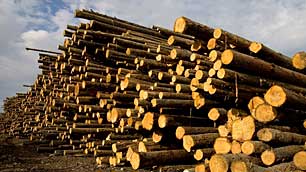In what’s been a challenging time for the forest industry, many groups have been scrambling for a solution on how to best shape the future of the industry.
Several mills have implemented curtailments or shutdowns, which have made life difficult in some of the rural areas of Northern BC.
On top of a 69-million dollar investment that was announced by the province, the BC Council of Forest Industries unveiled a 60-point plan to make the forestry sector more sustainable.
MyPGNow.com spoke with COFI President and CEO Susan Yurkovich on several points of their platform.
1) Implement a “no-net-loss policy” to provide certainty in the long term. Undertake a review every 5 years. How would this be achieved?
“The fundamental thing is that you need to have consistent access to a fibre supply base that you can take and turn into a large variety of products that we do that are in demand around the globe and it all starts with fibre.”
“So what we’re saying is, just as we do with putting land aside for other values we should really declare a working area for the working forest and keep it consistent so that companies that are looking to make investments can make sure they have consistent access to fibre and turn it into quality products.
“Without that certainty around the fibre, it makes it very difficult to invest the hundreds of millions of dollars that are required for businesses of this type in the province,” added Yurkovich.
2) Accelerate the replanting of Not Sufficiently Restocked (NSR) areas to return them to productive forests. Set a goal of achieving 100% completion within 5 years. Targeting a 24-month timeline to salvage timber following wildfires.
“We believe there is more to do in that front when we plant trees where we are seeing the next generation of forest industries and a lot of countries around the world are looking to enhance reforestation as a way to address climate impacts as well so we think there are some areas we should be looking at.”
“When we are harvesting an area we plant trees for everyone but there are areas in the province that may not have been sufficiently restored or where we have had these devastatingly large wildfires where we need to get back and reforest those as quickly as possible and return them to growing fibre as quickly as we can,” explained Yurkovich.
3) Increase revenue sharing to direct 40% of stumpage revenue to support local communities and First Nations. This revenue will create a means for First Nations to increase direct participation in the industry and will support community initiatives. How could this benefit the north?
“There’s a large number of First Nations that are actively engaged participants in our industry whether they are contractors or suppliers or working in our facilities and we think there is more opportunity there for them to continue to grow their participation,” said Yurkovich.
“I think it’s important for communities whether their indigenous or local communities to participate in the revenues that come directly from the forest resource.”
4) Establish a permanent Chair in Green Building at UBC and/or UNBC. How would this benefit Prince George, which already has the Wood Innovation and Design Centre?
“Prince George is a huge hub for the forest sector and we think BC can be the hub for green buildings and green building technology. When we talk about the Wood Design Centre we’ve been at the forefront of tall woods and we’ve got the architects, we’ve got engineers here who have been leading the charge when building with wood and we’ve developed new multi-story buildings.”
“We’ve been leaders in wood building and we think we can be the global hub.”
“Everyone is facing a climate challenge and wood is the perfect material in a climate constrained world. We think we’ve got more opportunity and that’s where most of the forest jobs of the future are going to come from. We’ve already got the people and the resources along with the know-how. We just have to take it to the next level.”
A link to the full 60-point plan can be found here.
Something going on in the Prince George area you think people should know about?
Send us a news tip by emailing [email protected].









